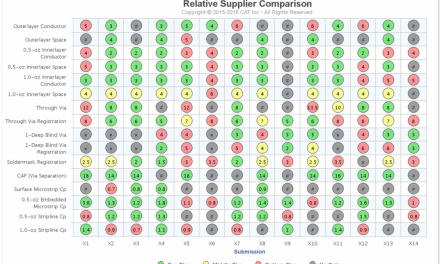Smartphone Demand Rebounds in 2H23, Q3 Production Rises 13% with Continued Growth Expected in Q4, Says TrendForce
TrendForce reports that smartphone production—fueled by reduced channel inventories and spikes in seasonal demand—saw a significant uptick in 3Q23. Global smartphone production in the third quarter reached approximately 308 million units, marking a 13% QoQ increase. Although this figure has yet to reach pre-pandemic levels, it represents a 6.4% YoY increase, effectively ending an eight-quarter streak of annual declines.
Looking ahead to 4Q23, e-commerce promotions and the year-end shopping boom, coupled with the customary end-of-year surge in production by smartphone brands, are likely to stimulate a further 5–10% QoQ increase in production. The projected downturn in global smartphone production for 2023 is expected to be limited to less than 3%, with total annual output estimated to reach approximately 1.16 billion units.
Huawei’s market return puts pressure on Apple’s market share in China for next year
Samsung, leveraging its presence in the flagship smartphone market, continues to lead the market after recording an 11.5% increase in its Q3 production at 60.1 million units. Despite Samsung’s extensive global reach, the company’s conservative planning in light of global economic headwinds has narrowed its annual production lead over Apple to a mere 5 million units.
Apple, riding the wave of its latest flagship releases, saw its Q3 production climb 17.9% to reach approximately 49.5 million units. However, the initial low yield rates of the CIS in the iPhone 15/15 Plus series adversely affected Apple’s Q3 performance, resulting in a 1.5% YoY market share decline, with annual production expected to align with 2022 levels.
Huawei’s re-entry with its flagship phones has made a significant impact on the high-end smartphone market in China, with Apple being the primary target. As Huawei aims to expand its high-end flagship series in 2024 with a focus on the Chinese domestic market, the company is set to directly Apple. This strategy, coupled with prevailing geopolitical factors, positions Huawei as a formidable competitor and is anticipated to significantly impact Apple’s production performance in the upcoming year.
Transsion outperforms Vivo in the third quarter to clinch the fifth spot globally
Following the completion of channel inventory adjustments, Xiaomi (including Xiaomi, Redmi, and POCO) has shifted to a more assertive stance in both device production and component stockpiling as the year draws to a close. Xiaomi’s Q3 production jumped by 22.3% to approximately 42.8 million units—bolstered by the resurgence of the Indian market—solidifying its status as the world’s third-largest producer. Oppo (including Oppo, Realme, and OnePlus) experienced a 15.2% increase in its Q3 output to 38.7 million units. This growth, fueled by rising sales in markets like India and South America, is anticipated to maintain its momentum into the fourth quarter.
Transsion (including TECNO, Infinix, and itel) continued its robust performance from Q2 into the third quarter, achieving production output of 26.5 million units—a 5.6% increase QoQ. This surge enabled Transsion to overtake Vivo again and secure the fifth spot globally. The brand has been thriving in emerging markets and steadily growing its market share since the second quarter. With the potential for an annual growth rate exceeding 40%, Transsion remains in close competition with Vivo for global rankings.
Vivo (including Vivo and iQoo) saw its Q3 production rise to 24.5 million units, marking a 6.5% increase and placing it in the sixth spot. The company adopted a more conservative production plan in 1H23 in response to the global economic downturn. Even as the market in China, one of its primary regions began to improve in the latter half of the year, Vivo maintained its strategy aimed at ensuring steady profits.












